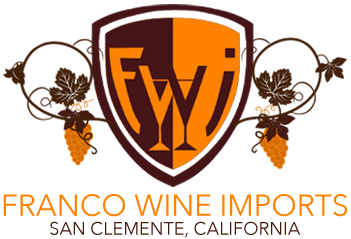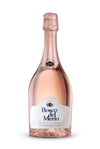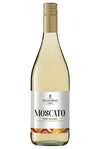 |
ITALIAN GRAPE VARIETALS - The most recent official Italian survey of vineyards, performed in 2010, lists about 440 different grape varieties growing in Italy. But new varieties continue to be recognized, and as of mid-2018, the national registry of grape varieties cataloged 517 winegrapes. A lot of these are not grown in great quantity, but the diversity of grapes in nevertheless astonishing. Find a complete list in alphabetical order of most of the significant varieties, including all varieties with more than 400 hectares (1,000 acres) planted or that feature in a DOP wine at: italianwinecentral.com/variety-alphabetic/
HOW ARE THE WINES RATED? |
|---|
 Kerin O’Keefe is a wine critic, author and lecturer kerinokeefe.com |
 |
 |
 |
WHAT IS THE DIFFERENCE BETWEEN UNOAKED AND OAKED CHARDONNAY ?
The Essential Guide to ChardonnayBY WINE ENTHUSIAST
|
|
|
WHAT IS NATURAL WINE ? This type of wine is made naturally as it used to be made before chemical and fertilizers were developed. Natural wines use no additives.
WHAT IS BIODYNAMIC WINE ? Like biodynamic agriculture in general, biodynamic grape-growing stems from the ideas and suggestions of Rudolf Steiner (1861.1925), which predate most of the organic movement. The principles and practices of biodynamics are based on his spiritual/practical philosophy which includes understanding the ecological, the energetic, and the spiritual in nature.This term pertains to wine that is made of grapes planted according to the farmer's almanac taking in consideration the phases of the moon, and the affects of earth's gravity. The holistic health of the vineyard is taken into account rather than just of the grapes.
IS ALL WINE VEGAN ? The majority of people are unaware that wine, although made from grapes, may have been made using animal-derived products. During the winemaking process, the liquid is filtered through substances called “fining agents.” This process is used to remove protein, yeast, cloudiness, “off” flavors and colorings, and other organic particles. Popular animal-derived fining agents used in the production of wine include blood and bone marrow, casein (milk protein), chitin (fiber from crustacean shells), egg albumen (derived from egg whites), fish oil, and isinglass (gelatin from fish bladder membranes).
Thankfully, there are several common fining agents that are animal-friendly and used to make vegan wine. Carbon, bentonite clay, limestone, kaolin clay, plant casein, silica gel, and vegetable plaques are all suitable alternatives. We recommend a great vegan wine such as Timorasso, Timox.
WHAT IS ORANGE WINE ? Orange wine is a white wine treated like a red wine: juice from white grapes spends time with the skins, leading to its characteristic sunset color. The term “orange wine” isn’t officially defined, so it can mean different things to different winemakers. Length of skin contact, grape varieties and aging techniques are all open to interpretation. Despite the range, there are a few consistent characteristics in orange wines—notes of hazelnuts, almonds, citrus fruits (even oranges!) and dried fruits are often found in the glass. Most commonly found in red wines, tannins are also present on the palate. This versatile wine pairs with a range of foods: hard cheeses, pork, seafood, sausage and chicken all partner perfectly. Duck also works especially well. guide.michelin.com/us/washington-dc/features/orange-wine-explainer/news
Try our Timorasso, Timox, and Ribolla Gialla.
WHAT DOES DOCG, DOC, and IGT MEAN ? In the second half of the 20th century, Italy decided to establish a series of laws to safeguard the quality and authenticity of their wine.These safeguards take the form of protected zones where growers and producers must adhere to strict regulations in order to be certified by these laws. The laws also govern things like the type of grapes used, the alcohol content, and how long the wine is aged.
Certification falls into three categories of decreasing strictness: DOCG, DOC, and IGT.
Denominazione di Origine Controllata e Garantita (DOCG): Seeing this on the label of your wine bottle means that the wine producers followed the strictest regulations possible to make that wine. The wine is tested by a committee that then guarantees the geographic authenticity of the wine and its quality.
Denominazione di Origine Controllata (DOC): DOC wines are much more commonly found. The rules governing quality and authenticity are still very strict, but they are a little more generous than those for DOCG status. For instance, the geographic zone might be a little bigger or the rules about what kind of grapes might be a little more relaxed.
Indicazione Geografica Tipica (IGT): This designation was created a little after the DOC and DOCG designations in order to accommodate growers who couldn't meet all the DOC or DOCG regulations for one reason or another, but were still producing great wines.
DENOMINATIONS BY QUALITY-The lists below categorize the Italian wine denominations by their official quality level designation. The highest quality level in Italy, in principle, is Denominazione d’Origine Controllata e Garantita
simply “wine” or vino.






















 White Wine 101
White Wine 101 Red Wine 101
Red Wine 101